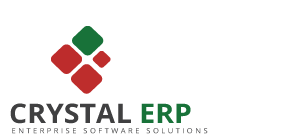While new technologies are being adapted at lightening pace across all kinds of industries, one thing has not changed: IT departments are expected to use antiquated storage solutions to meet their new storage needs. Just as we wouldn’t expect anyone to use a twenty-year old phone to communicate effectively, it is unreasonable to expect IT professionals to use tape and proprietary storage arrays to store massive amounts of data, especially in this era of powerful cloud computing.
The simple fact is that it is impossible to manage today’s storage needs with yesterday’s storage solutions because of key trends that are disrupting the storage industry as we have known it thus far.
These key trends include:
Big Data: In our Cloud-based world, data keeps getting bigger and bigger. Gartner defines “big data” according to the “three Vs”: increasing volume, velocity (speed of data in and out) and variety (range of data types and sources). Indeed, sources say that every day we create 2.5 quintillion bytes of data—which is so much that 90 percent of the data in the world has been created in the last two years alone.
Traditional approaches to enterprise storage such as SAN and NAS can be costly, especially for data that needs to be retained but is seldom accessed, while tape-based storage increasingly does not meet enterprise requirements in an ‘on-demand’ era. However, object-based storage systems are emerging as a new category in enterprise storage, allowing organizations to store vast quantities of data ‘online,’ and at a price point that won’t break the bank.
Cloud: With the popularity of cloud computing, IT organizations are now warming up to the idea of deploying private cloud storage in the enterprise. They are expecting the same benefits they derive from cloud computing in general, namely elasticity, simplified management, fault-tolerance & commodity hardware, to be available with cloud storage. Unfortunately, traditional storage architectures can’t deliver that promise for cloud storage.
Mobile: The simple fact is, just as workers are more mobile than ever before, so is data. There are two types of companies today: ones that are “born in the cloud” and thus already need a virtualized approach to storage, and companies that are now trying to move to the cloud. The cloud has in essence become the true receptacle for data. The only way to truly tame the data that is flowing to and from so many sources is to be able to tap into the Cloud itself, to build reliable, scalable and affordable cloud storage solutions. Storage solutions based on physical locations simply no longer work. Storage solutions need to be software-based and flexible to meet IT departments’ specific needs—and many locations.
Storage-as-a-Utility: The truth is that the technology exists to help IT professionals finally break free from the shackles of storage. The trick is that IT pros need to believe that storage-as-a-utility can be a reality because, frankly, they have no other choice. IT budgets simply will not allow massive investments in storage.
The good news is that cloud storage solutions can now help organizations address their big data storage challenges by providing software to build private or public clouds using commodity servers. These new methods require minimum IT involvement, dramatically reduce the costs of cloud deployment and management—and, as a result, are helping make “Storage-As-A-Utility” a reality.
So, while big data continues to explode, and old storage systems continue to break, there are simple solutions on the market to redefine storage as we have known it to date. And these solutions won’t drain budget—in fact, a well-planned Cloud storage solution based on software and commodity hardware could actually free IT budget up for other projects, finally making the dream of IT pros to be able to use their funds for ground-breaking projects rather than grueling maintenance a reality.


Leave a Reply
You must be logged in to post a comment.